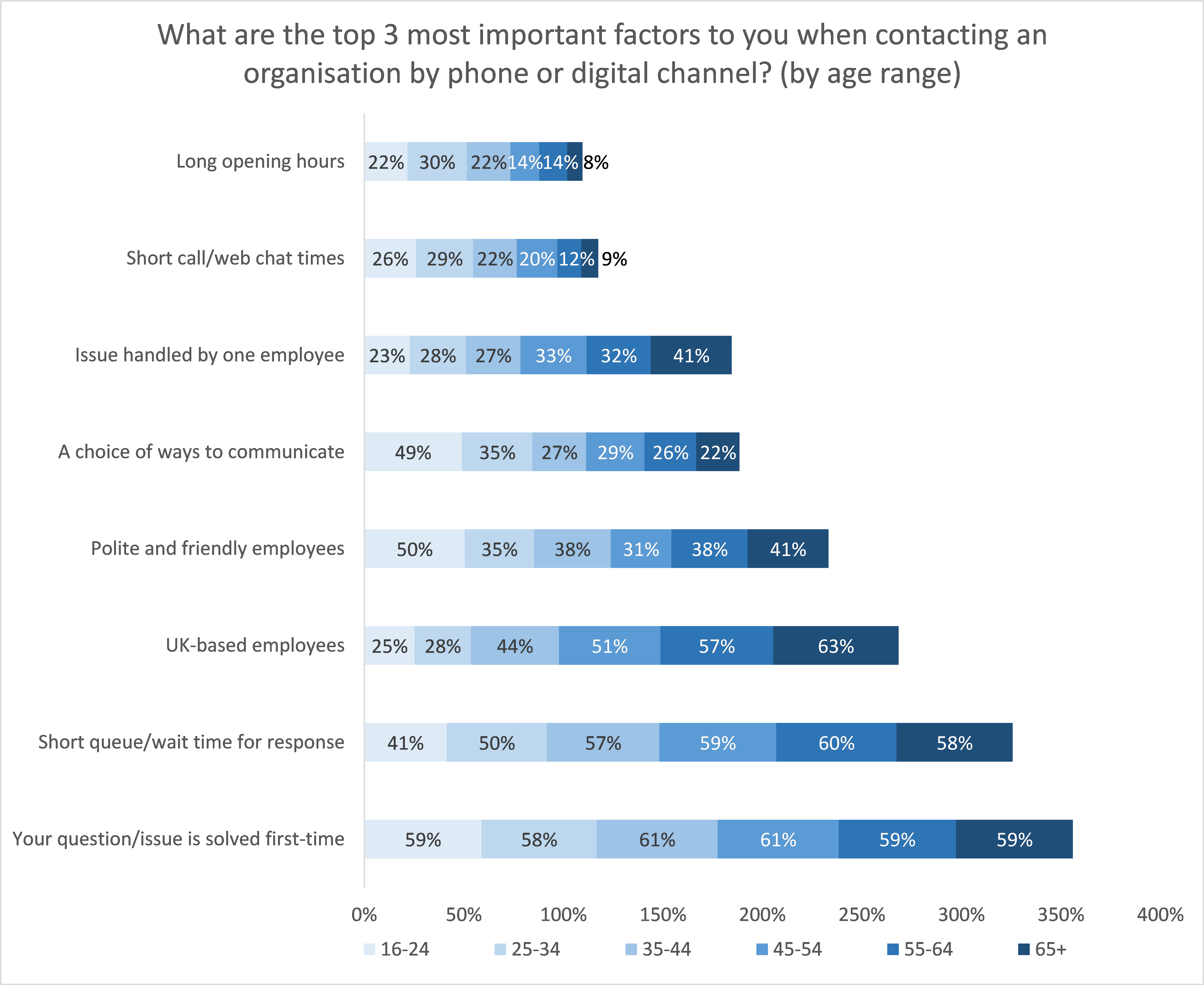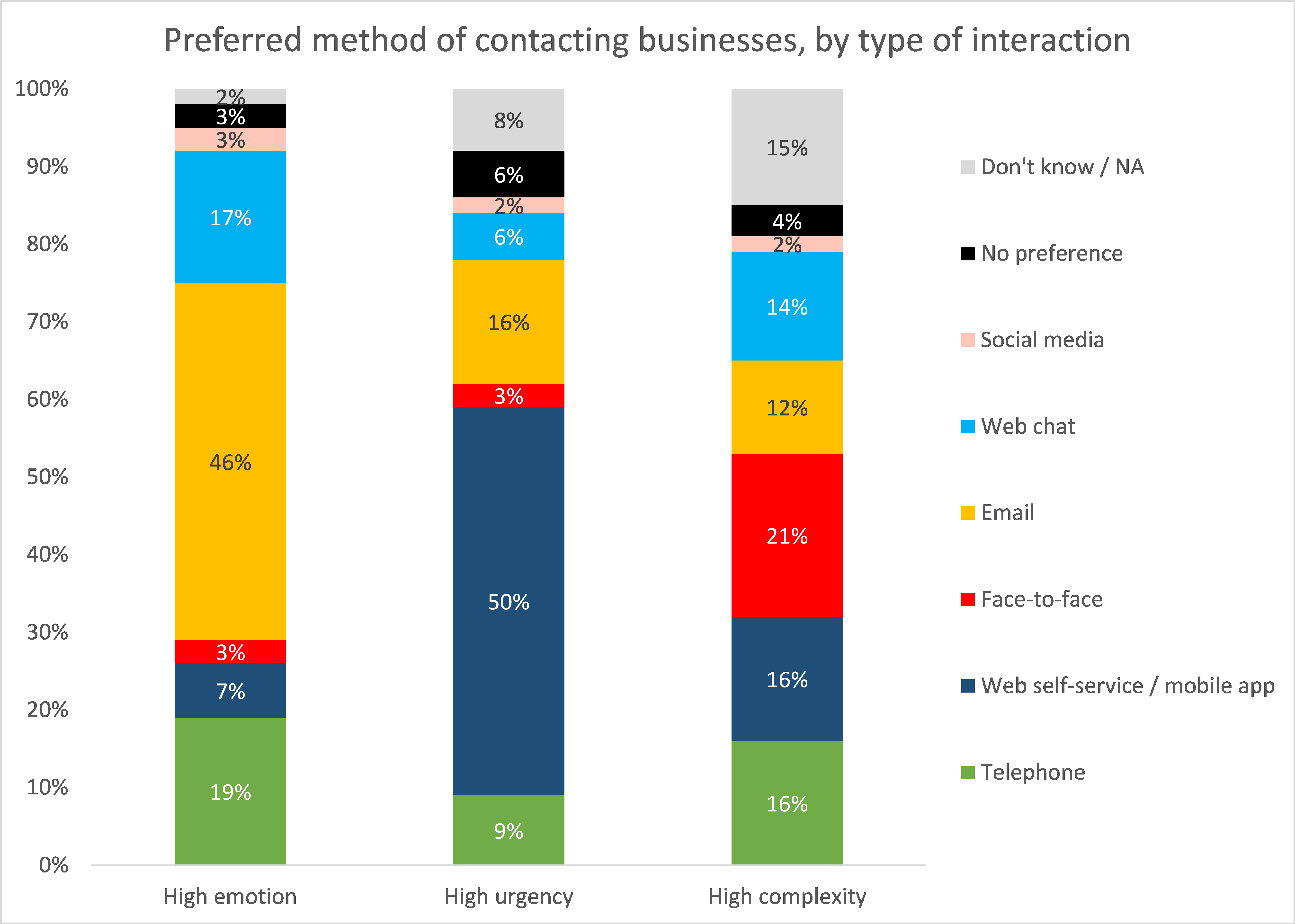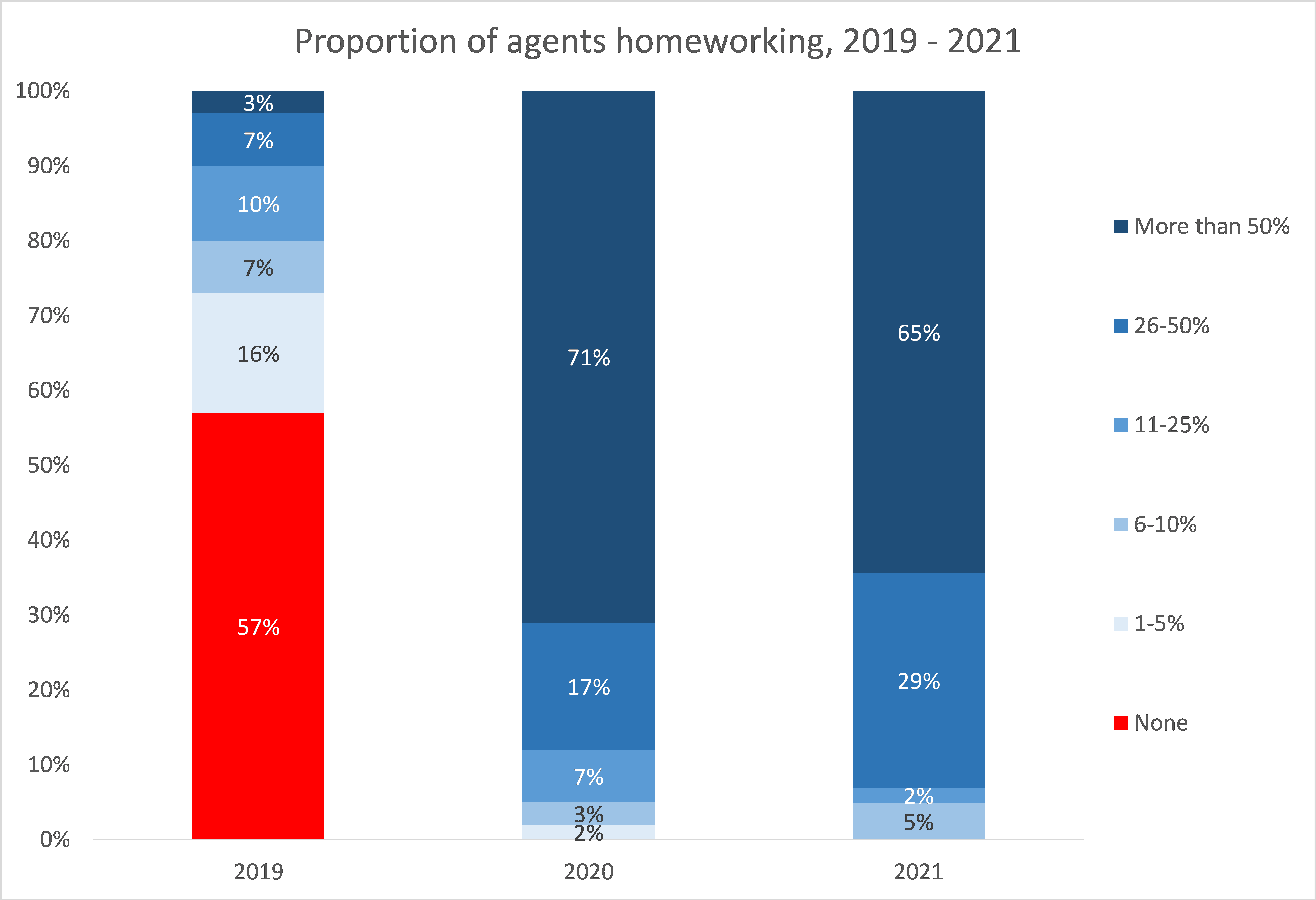Highlights from last year's UK CX Decision-Maker's Guide
)
Every year, ContactBabel carries out a survey of over 200 UK companies, looking at CX activities, strategies and benchmarks. The result is “The UK Customer Experience Decision-Makers’ Guide”.
To whet your appetite for the 2021 report, I’d like to cover some of the key findings from the current research.
Hopefully after reading this, you’d like to take part in the 2021 survey and receive the full report in August. We’ll also donate £20 per survey to a charity of your choice.
1. First-Contact Resolution is Key to Customer Experience

Over many years, our research consistently shows that most businesses consider customer satisfaction to be the most important customer metric. But what makes a customer satisfied?
The chart above shows that first-contact resolution is valued the most by almost every age group of customer.
And first-contact resolution is a win-win for both customer and business: not only do customers come away feeling happy, but the agent’s morale is boosted, the chances of successfully cross-selling are better, and there are fewer costly call-backs to handle as well. It’s a true miracle metric.
In the 2021 survey, we’re looking at whether businesses’ beliefs about what’s most important to customers actually align with what customers think.
2. Channel Choice Depends Upon the Customer Type, and Why They’re Contacting You

While 60-70% of most businesses’ customer contact comes by phone, is this what customers really want? Should you be trying harder to align your channels with what they actually want?
We asked 1,000 UK consumers to tell us which channel they’d prefer to use in three cases, where high emotion, high urgency and high complexity were present.
The answers were very different in each case.
For high emotion interactions, almost half of customers choose email in the first instance, perhaps as this gives them a chance to put their all of thoughts into order without feeling even more pressured. Web chat was also popular, particularly amongst 25-44 year-olds, a channel which again allows customers to take a considered approach.
For high urgency cases, web self-service was very popular with all age groups as it can provide immediate information without any need to wait for an agent to become available to help.
The picture for highly complex queries was somewhat mixed. Older customers are most likely to want face-to-face interactions – although this figure had dropped considerably from the previous year due to coronavirus – whereas younger groups had a mix of email, phone and web chat as their primary channels for complex interactions.
In our 2021 survey, we’re asking whether the rise in the use of video calling over the past 12 months means that customers would like to use this channel to contact businesses.
3. Remote Working Exploded in 2020: Will This Continue?

The almost vertical ascent of remote working in 2020 can be seen in the chart above: whereas 57% of UK businesses had no customer contact staff working at home in 2019, 71% had more than half of their staff remote working last year.
The expectation last summer was that this pattern would continue in 2021, but is this the case?
Anecdotally, there seems to be strong support moving forward for a hybrid model where workers split their time between home and office, but will this be the case in the contact centre too?
In our 2021 survey, we ask what businesses are planning with contact centre remote working, is the customer experience still suffering because of the pandemic – and if so, why?
4. Customer Satisfaction Scores and NPS are Rated the Most Important CX Metrics by Senior Leaders

On the face of it, customer satisfaction and NPS (Net Promoter Score) are good top-line gauges of how customers feel about your business.
Yet look at our previous finding – that the first-contact resolution rate is key to improving the customer experience – and compare that with tiny minority of UK businesses who see that metric as the most important against which to judge CX.
On the bright side, only a few years ago the majority of businesses didn’t even try to capture first-contact resolution, so things are heading in the right direction.
In the 2021 survey, we’ll be looking at whether businesses really understand where customer satisfaction comes from, and what’s driving positive and negative CX.
To take part in the 15-20 minute research study for “The 2021 UK Customer Experience Decision-Makers’ Guide”, please visit smartsurvey.co.uk/s/CXDMG2021/
The survey is entirely confidential.
Participants will be sent the full report in August, and we'll donate £20 per survey to a charity of your choice.
The report will show customer experience and contact centre professionals:
- How your competition is going to be spending their CX budgets in 2021 and 2022
- How your CX performance benchmarking scores compare to your competitors
- Which technology has the greatest positive impact on customer experience
- How the pandemic has affected customer experience, and is CX anywhere near being back to normal?
- Which channels do customers really want to use - and when?
- What customers want from AI and how it affects CX.
Findings are reported by vertical market and business size, so you can directly compare your CX initiatives with other organisations like yours.
If you have any questions, please contact Steve Morrell at ContactBabel.

-(1650-×-500px)-(2).png)
